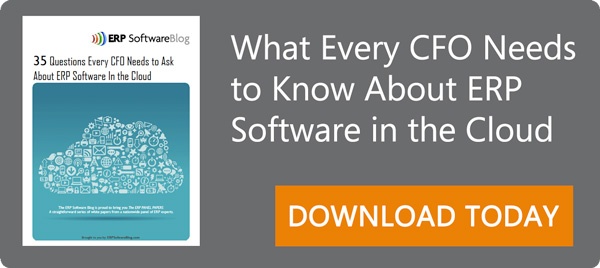Is Software-as-a-Service ERP Really on the Rise?
Many enterprises are currently unable to proceed with regional or global SaaS roll-outs due to the lack of data center support. However, recent figures indicate that an increasing number of developers and vendors make available more complex, fully integrated SaaS packages, which will make possible the shift toward cloud computing everywhere in the world.

Further, since most software developers, vendors, and users see the cloud as a once-in-a-lifetime opportunity, many of them will aggressively switch from on-premise systems to cloud-based solutions. Thus, the cloud is likely to become a dominant choice of deployment for ERP solutions.
However, should you blindly follow this trend? Is there anything else you need to know before embracing a visionary theory you might not even be convinced of?
Nowadays, significant benefits resulting from using SaaS ERP software sway many organizations to opt for this cloud-based ERP solution. These benefits include:
- An ERP system deployed over the cloud is more affordable than a traditional, on-premise package. Instead of costly upfront and maintenance charges, the organizations using software-as-a-service ERP are required to pay a monthly fee, which includes software implementation, hosting, support, updates, upgrades, and maintenance.
- SaaS ERP proposes a scalable infrastructure that can accommodate huge amounts of data. The ability to increase computing capacity rapidly enables organizations to deliver consistent services, which means they’ll never miss out on peak demand.
- SaaS apps can be accessed at any time, from anywhere. Additionally, most Internet users are already familiar with using advanced technology. Thus, it’s no wonder that a SaaS software distribution model has high adoption rates, with low learning curves.
- ERP service providers making available SaaS infrastructures offer a wide variety of customization capabilities to meet diverse industry-specific needs. Furthermore, most vendors provide an assortment of application programming interfaces (APIs) to allow users to seamlessly integrate their existing ERP solutions with the SaaS distribution model.
The aforementioned points can help you understand why cloud ERP adoption is faster than industry experts have previously predicted. Now, the only thing left to see is whether or not SaaS ERP software is the next best thing.
SaaS ERP Predictions
Since SaaS makes available an architecture model where users/client-organizations, usually referred to as tenants, share the same interface while keeping data on separate servers, it delivers one of the best software distribution options, allowing both service providers and users to get more with less input. Considering the benefits an organization obtains by opting for this model, top industry players, including Microsoft, have already developed ERP systems capable to support multiple tenants natively.
An example is Dynamics AX, which can be used to host multiple user profiles and address different business areas across organizations. Although specific customizations are usually done to meet the needs of one agency/headquarters, the multi-tenant characteristics of Dynamics AX allow organizations to use this solution across multiple agencies/subsidiaries with identical or similar needs without duplicating the system.
Another important aspect most field experts focus on when talking about SaaS ERP predictions gravitates toward customer service. Since business success is tied to the ability to attract and retain customers, developers are already planning for advanced features that will make organizations more customer-oriented than ever before.
SaaS might be the best solution for many enterprises. However, to successfully implement and run a SaaS business software suite, you must have a high degree of control and stability across your organization's functional roadmap. Additionally, to ensure perfect integration with existing apps, you might need to reconfigure your entire in-house system before attempting to implement a SaaS ERP model. Since this may require you to spend significant amounts of resources, it’s imperative to make sure that the cloud is exactly what you need to achieve your business goals.
 ERP Trends: SaaS ERP on the Rise or Fall?">
ERP Trends: SaaS ERP on the Rise or Fall?">
